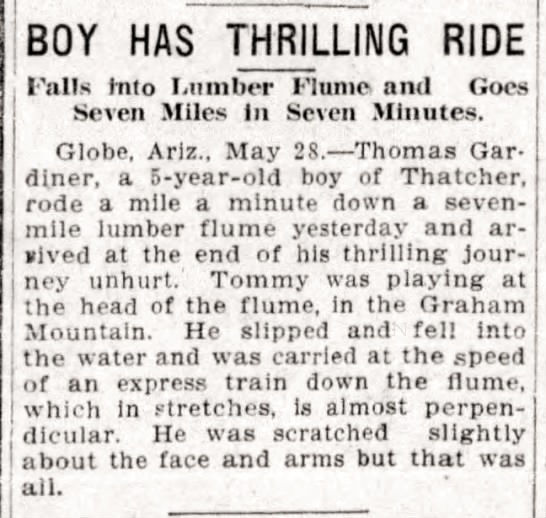1901::The Lumber Flumes of British Columbia
- Papertown Station

- Jun 4, 2021
- 2 min read
Updated: Apr 7, 2023
Logging the ancient forests of early British Columbia.

"Riding the Lumber Flumes"
Sketch Clip: The Illustrated London News (1901) London, England
Logging the ancient forests of the Pacific Northwest began with Captain Meares at Nootka on Vancouver Island in the 1780s, perhaps even sooner by Captain Cook. In the 1820s, sawmills became operational on the Columbia River and Puget Sound and eventually made their way to Vancouver Island. As the timber industry grew, so did each mill and the town around it. In the 1860s, island mills had expanded to the mainland of British Columbia and eventually worked their way up the coast and into the interior. As these operations stretched up mountainsides, water flumes were often erected to float the hewn timber from the mountaintop logging camps down to the sawmills below. These flumes were fed by mountain torrents or dams and, in many cases, stretched for miles through a dense forest. Although their primary purpose was to transfer logs, the flumes became helpful for sending mail from camp to base and for transporting employees down the mountain after a long work week.

"A British Columbia Log Flume"
Photo: Vancouver Archives (CVA 677-216)
The camp's lumbermen would construct a rough wooden skiff and use it to ride the flume's waterway down the mountain, often travelling at a rate of a mile-a-minute with nothing but a gaff to be used as a brake. In this way, the flumes saved the company's tired lumbermen from a tedious journey home by providing a quick commute down the miles of mountain terrain.

"Riding a BC Lumber Flume"
Photo Clip: (tbd)
By the turn of the 19th century, British Columbia's lumber flumes would rank among the longest and most efficient in the world. Their story, as well as more lumber flume stories, will soon be featured on Papertown Station.

"Speed of an Express Train"
Clip: The Province (1910)
Vancouver, British Columbia
Although the photo of the boy in the photo above was taken many years after the story of the young boy falling into the flume, it offers a good visual as to what it might have been like for a young boy to ride the miles of lumber flume.

"A Detailed Flume Story"
Clip: The New North-West (1886)
Deer Lodge, Montana
Although this story is not in any way associated with the London sketch above, it does give a detailed description of riding the early flumes and what it might have been like to ride them on a homemade skiff.



